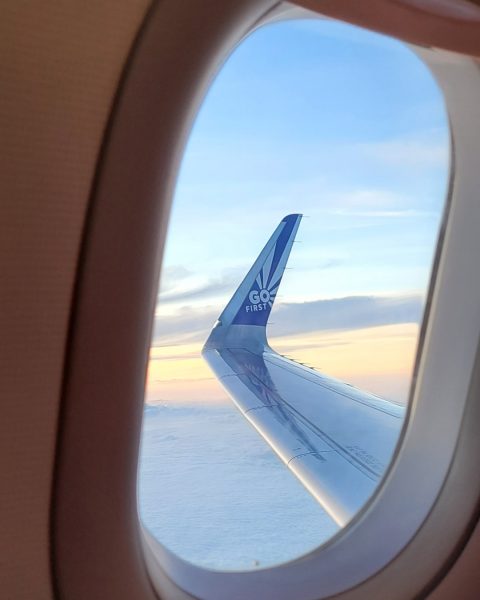
Go First says it's ready to soar again, but the odds suggest otherwise
Troubled airline's destiny depends on its capacity to raise funds quickly, and solve engine problems

The Wadia-owned airline Go First management has made some daring claims, saying the insolvency procedures are focused on rebuilding the airline rather than selling it. However, it is easier said than done.
With the filing of the bankruptcy petition, it has set the ball rolling for a series of subsequent actions, over which the lenders, regulators and the National Company Law Tribunal (NCLT) will now determine the fate of the airline.
For instance, the airline has received a show cause notice from the Directorate General of Civil Aviation (DGCA) over its failure to continue operations. If it doesn’t respond within 15 days, a decision will be made regarding whether its air operator’s licence should be cancelled as it has filed for insolvency.
Opinion: From growth-wary to grounded: How Go First flew into rough weather
The management stated in its filings with the NCLT that the airline had a spotless history and that there had not been any defaults up until the petition’s submission on May 2. However, Go First owes several banks Rs 6,500 crore (about $800 million) as well as $300 million in unpaid aircraft lease fees and $45 million in passenger refunds, despite the fact that it has not fallen behind on any payments.
Add to the fact that nearly half of its 54 aircraft fleet is grounded, and Go First’s losses have been mounting, this shows it is in an unenviable position. Unless the airline can restart operations, it will no longer be able to service the debt and pay vendors. It is a chicken-and-egg scenario. If it were able to raise funds, it wouldn’t have filed for insolvency in the first place.
First obstacle
Go First’s first obstacle came after it asked the NCLT for a moratorium on its obligations because its sole assets were its planes. However, the NCLT reserved its decision on the airline’s urgent request for voluntary insolvency. This prompted the lessors to move swiftly to seek deregistration and repossession of 20 A320 aircraft after filing applications with the regulator, the DGCA, using their Irrevocable Deregistration and Export Request Authorization (IDREA). Three days later, the lessors submitted a new application to the regulatory body asking for the repossession of 13 further A320 aircraft.
Flight Insight: Go First bankruptcy: 9 policy changes that can provide tailwinds to Indian aviation
Kaushik Khona, Go First CEO, recently stated that once the NCLT prohibits lessors from repossessing the aircraft, operations can restart. The airline was successful in its arbitration appeal against the engine manufacturers in March this year. An emergency arbitrator at the Singapore International Arbitration Centre ordered Pratt & Whitney to release and dispatch at least 10 serviceable spare leased engines to the airline without delay by April 27 and another 10 spare leased engines per month until December 2023.
As a result of Pratt & Whitney’s contention that Go First had repeatedly missed payments due to the engine manufacturer, the airline has also requested $1.4 billion in compensation, which may not be granted entirely.
Also read: DGCA issues show cause notice to Go First; asks it to immediately stop sale of tickets
Airline’s future
What is puzzling, though, is how Go First can assert that it can resume operations once the lessors are barred from repossessing the aircraft when the reason for filing insolvency was that it claimed that it had run out of funds and had suffered losses because of issues with Pratt & Whitney engines. It has not even been able to raise money to refund passengers’ airfares despite DGCA instructions.
By filing for insolvency, Go First has triggered a series of counter moves by competing airlines. According to reports, these airlines have asked the regulator to assign them the airport slots that Go First was utilising for its flights.
Aside from the fact that there has been a constant outflow of airline employees to other airlines, Go First’s 8 per cent market share, which amounted to about 35,000 passengers per day, is now steadily being absorbed by rival carriers. As a result, it places the airline in a difficult position as it will have to start afresh in case it is able to resume operations.
Flight Insight | Sky wars: How Akasa plans to take on Air India-IndiGo duopoly
So far, the Wadias have invested over Rs 7,000 crore since the airline began operations in 2005. Additionally, it received Rs 1,500 crore authorised under the government’s Emergency Credit Line Guarantee Scheme, of which the airline has already used Rs 1,300 crore.
Airline CEOs
There have long been problems with Pratt & Whitney, and Go First should have actively sought out alternatives when the first signs of the problem arose. There has also been a constant churn at the CEOs levels. Giorgio De Roni, Wolfgang Prock-Schauer, Cornelis Vrieswijk, Vinay Dube and Kaushik Khona, who previously held the position, are the five CEOs the airline has had since 2011.
Gen VK Singh, Minister of State for Civil Aviation, noted in a recent interview with Deccan Herald that Go First is two years too late to be able to save its operations. Its destiny depends on the management’s capacity to raise money quickly, find a solution for its engine problems, and maybe dramatically scale back operations until it is able to resolve all of its issues, despite the appearance of finality in the minister’s remark.

